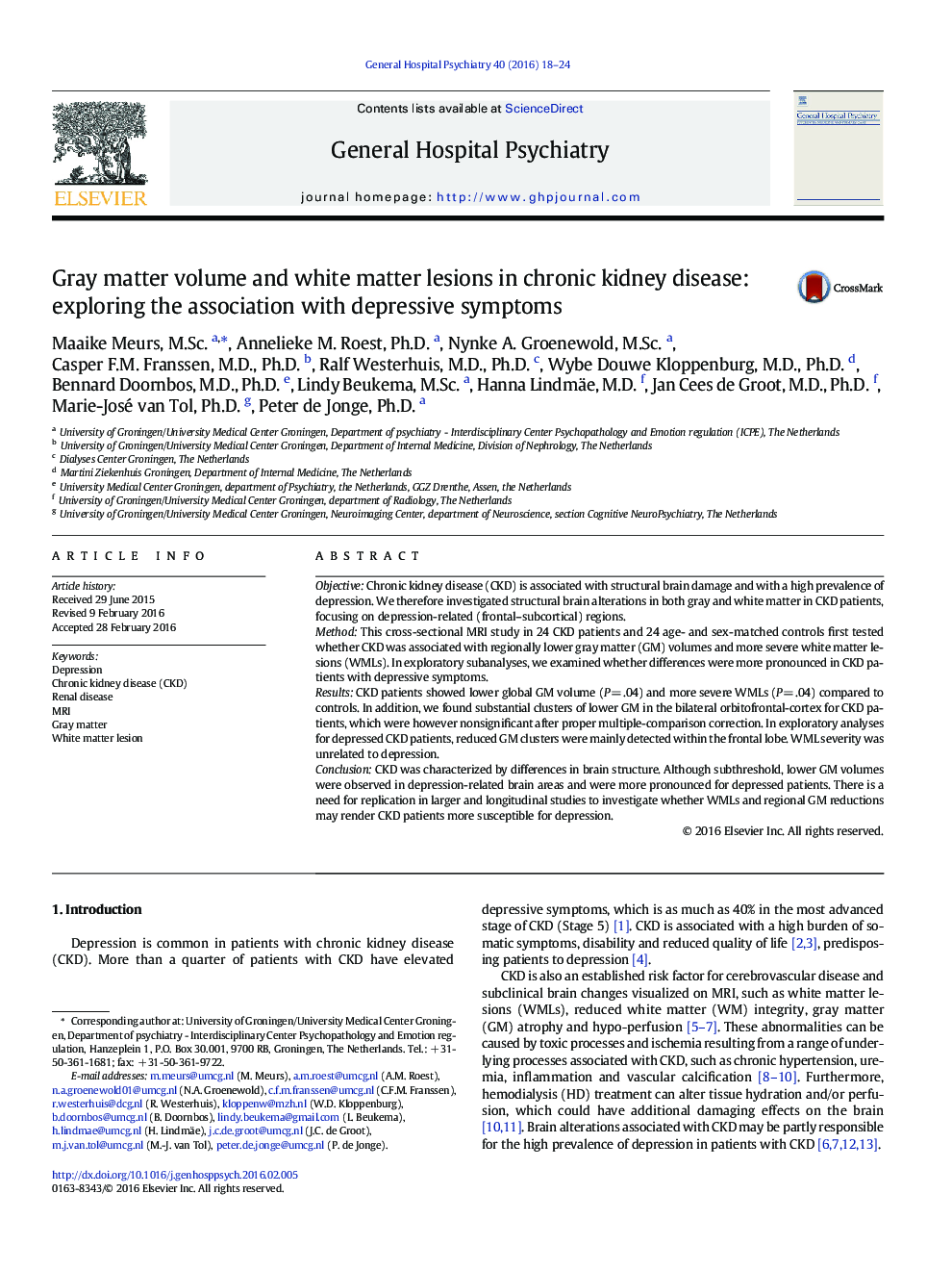| Article ID | Journal | Published Year | Pages | File Type |
|---|---|---|---|---|
| 3237540 | General Hospital Psychiatry | 2016 | 7 Pages |
ObjectiveChronic kidney disease (CKD) is associated with structural brain damage and with a high prevalence of depression. We therefore investigated structural brain alterations in both gray and white matter in CKD patients, focusing on depression-related (frontal–subcortical) regions.MethodThis cross-sectional MRI study in 24 CKD patients and 24 age- and sex-matched controls first tested whether CKD was associated with regionally lower gray matter (GM) volumes and more severe white matter lesions (WMLs). In exploratory subanalyses, we examined whether differences were more pronounced in CKD patients with depressive symptoms.ResultsCKD patients showed lower global GM volume (P = .04) and more severe WMLs (P = .04) compared to controls. In addition, we found substantial clusters of lower GM in the bilateral orbitofrontal-cortex for CKD patients, which were however nonsignificant after proper multiple-comparison correction. In exploratory analyses for depressed CKD patients, reduced GM clusters were mainly detected within the frontal lobe. WML severity was unrelated to depression.ConclusionCKD was characterized by differences in brain structure. Although subthreshold, lower GM volumes were observed in depression-related brain areas and were more pronounced for depressed patients. There is a need for replication in larger and longitudinal studies to investigate whether WMLs and regional GM reductions may render CKD patients more susceptible for depression.
